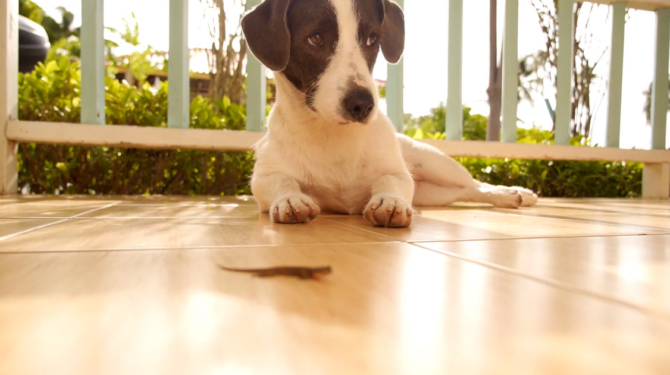Understanding the heat cycle of your dog is essential for responsible ownership. Whether you’re considering breeding your dog or are simply curious about what to expect, knowing the details of a dog’s heat cycle can make life easier for both you and your canine companion.
In this article, we’ll discuss the signs, factors, and other key considerations around the dog heat cycle. Let’s demystify this natural process and arm you with valuable information that can help in caring for your dog in the most informed way.
The Basics of a Heat Cycle

Understanding what a heat cycle is sets the foundation for everything else. The heat cycle, or estrous cycle, is a recurring period during which a female dog is capable of conceiving puppies. It encompasses the period from the first signs of fertility to the point when the dog is no longer fertile.
Why is it Important to Know?
Learning about the canine heat cycle is valuable for both breeders and pet owners. For breeders, timing is crucial for successful mating. For pet owners, knowing what to expect can alleviate concerns and help prevent an unwanted litter of puppies.
The Anatomy of the Heat Cycle
The dog heat cycle isn’t just about fertility—it involves hormonal changes that affect a dog’s body and behavior. Understanding the biology behind it can help you identify when your pet is going through different phases.
Hormonal Changes
During the heat cycle, hormones such as estrogen, progesterone, and luteinizing hormone play critical roles. These hormones prepare the dog’s body for potential pregnancy, and their levels fluctuate during different phases of the heat cycle.
Ovarian and Uterine Changes
The ovaries produce eggs for fertilization, and the uterus prepares for the potential implantation of a fertilized egg. These organs undergo physiological changes, including an increase in blood supply and nutrient levels.
The Phases
Understanding the phases of the heat cycle can give you a comprehensive view of what your four-legged friend experiences during this natural process. Generally, a dog goes through four primary phases: Proestrus, Estrus, Diestrus, and Anestrus.
Proestrus: The Beginning
Duration and Signs
Proestrus usually lasts between 7 and 10 days. The primary signs include a swollen vulva and bloody vaginal discharge. However, your dog won’t yet be receptive to mating.
Behavioral Changes
During proestrus, you may notice your dog becoming more clingy or displaying nervous behavior. Some dogs may also start urine marking to attract potential mates, even though they aren’t yet fertile.
Estrus: The Fertile Phase
Duration and Signs
The estrus phase lasts between 5 and 14 days. This is when the female is fertile and receptive to mating. The discharge often changes from bloody to straw-colored.
Behavioral Changes
In this phase, your dog may show “flagging behavior”—lifting her tail to the side when touched near the rump. This is a sign that she is receptive to male dogs. Diestrus and Anestrus: The End Cycle
Diestrus
This phase lasts about 60 to 90 days and occurs whether or not the dog has become pregnant. Hormone levels normalize, and any changes in the dog’s body or behavior start to subside.
Anestrus
Anestrus is a period of sexual inactivity that lasts until the next heat cycle begins. This can be between 4 to 5 months. During this time, the dog’s reproductive system is in a sort of “standby” mode, with no noticeable behavioral changes.
Signs Your Dog is in Heat

Some of the most obvious signs that your dog is in heat include a swollen vulva and discharge. However, signs can vary.
Physical Signs
Vaginal Discharge
You may notice a bloody discharge from the vulva. This is usually more prominent in the initial Proestrus phase and tends to lighten in color as the cycle progresses.
Swollen Vulva
The vulva may become visibly enlarged. This is often one of the first signs that owners notice when their dog enters the heat cycle.
Behavioral Signs
Frequent Urination
Your pet may urinate more frequently. This is not only due to hormonal changes but also serves to spread pheromones to signal availability to males.
Restlessness or Anxiety
Some canines become agitated or restless during their heat cycle. They may display nervous behavior, increased activity, or even vocalization.
Factors Affecting the Heat Cycle
Generally, smaller dog breeds go into heat more frequently, as often as three to four times a year, while larger breeds may only go into heat once a year.
Genetic Factors
Breed Specifics
Some breeds have specific patterns of going into heat. For instance, Basenjis usually go into heat only once a year, aligning with their original breeding environment.
Family History
If you know the heat cycle patterns of your dog’s mother or siblings, it could give you a rough idea of what to expect for your dog as well.
Environmental Factors
Seasonal Changes
Some dogs are influenced by the amount of available daylight, going into heat as the days get longer or shorter.
Stress and Illness
Stressful situations and illness can also impact the timing and duration of a heat cycle, sometimes delaying it or causing irregularities.
How to Care for a Dog in Heat

Caring for a dog in heat requires extra attention to both her physical and emotional needs. Let’s break it down.
Physical Care
Sanitary Measures
- Use doggy diapers to manage discharge.
- Clean her bedding regularly.
- Keep her clean to avoid infections.
Diet and Exercise
A balanced diet and moderate exercise can help alleviate some of the stress or discomfort associated with the heat cycle. However, be cautious during walks and keep her on a leash.
Emotional Care
Comfort Measures
Provide a comfortable environment. Your dog may be anxious, so soft bedding and a quiet space can help.
Attention and Love
Increased cuddle time and gentle petting can help alleviate emotional stress for your four-legged friend.
Myths and Misconceptions
There are numerous myths and misconceptions surrounding the dog heat cycle. Let’s set the record straight.
The “First Heat” Myths
Age to Expect First Heat
Many people believe small breeds will experience their first heat cycle at an earlier age than larger breeds. While generally true, there are exceptions, and knowing your specific breed is crucial.
First Heat = Time to Mate
Some believe that once a dog has her first heat, she is ready for breeding. This is not advisable as her body is still maturing.
Spaying and Heat
Spaying Ends the Heat Cycle
Yes, spaying your dog will prevent future heat cycles, but you should consult your vet about the best time to perform this surgery, as opinions vary based on factors like age, size, and health condition.
Spaying During Heat
It’s generally not recommended to spay a dog while she’s in heat due to increased blood flow to the reproductive organs, which can complicate surgery.
FAQs
Can male dogs sense when a female dog is in heat?
Yes, they have a strong sense of smell and can detect the pheromones released by females in heat. This can make males more alert, agitated, or eager to find the source of the scent, even from considerable distances.
Are there any health risks associated with a dog going through multiple heat cycles without being bred?
While going through multiple heat cycles without being bred is not inherently harmful, there is a risk of developing pyometra, a uterine infection, especially in older canines. It is advisable to consult with your veterinarian to discuss whether spaying is a suitable option for your pet’s long-term health.
Can changes in diet or medication affect a dog’s heat cycle?
Yes, certain medications, particularly hormonal treatments, can affect the timing and duration of the heat cycle. Changes in diet, especially if they result in significant weight loss or gain, could also potentially affect the cycle. Always consult your vet before making any substantial changes to your pet’s diet or medication.
Is it normal for a dog to skip a heat cycle?
While most canines have fairly regular heat cycles, it is possible for one to skip a cycle or have an irregular cycle. Stress, illness, and changes in living conditions are some of the factors that can contribute to a skipped or irregular cycle. If this happens, a veterinary consultation is recommended to rule out any underlying health issues.
Can a dog get pregnant during her first heat cycle?
Technically, yes, but it’s not recommended to allow her to do so. Her body is still growing and maturing, and pregnancy could pose health risks for both the mother and her puppies.
Can vaccinations impact the heat cycle?
There is currently no scientific evidence to suggest that standard canine vaccinations directly affect a dog’s heat cycle. However, stress or minor illness after vaccination could potentially have an indirect effect. Always consult your vet with any concerns about vaccinations and your dog’s reproductive health.
Final Words
Knowing about your dog’s heat cycle can make life easier and more comfortable for both you and your pet. Whether you’re a curious pet owner or a future breeder, a solid grasp of this topic is invaluable. Armed with this knowledge, you can now provide better care and make more informed decisions about your furry friend’s reproductive health.






